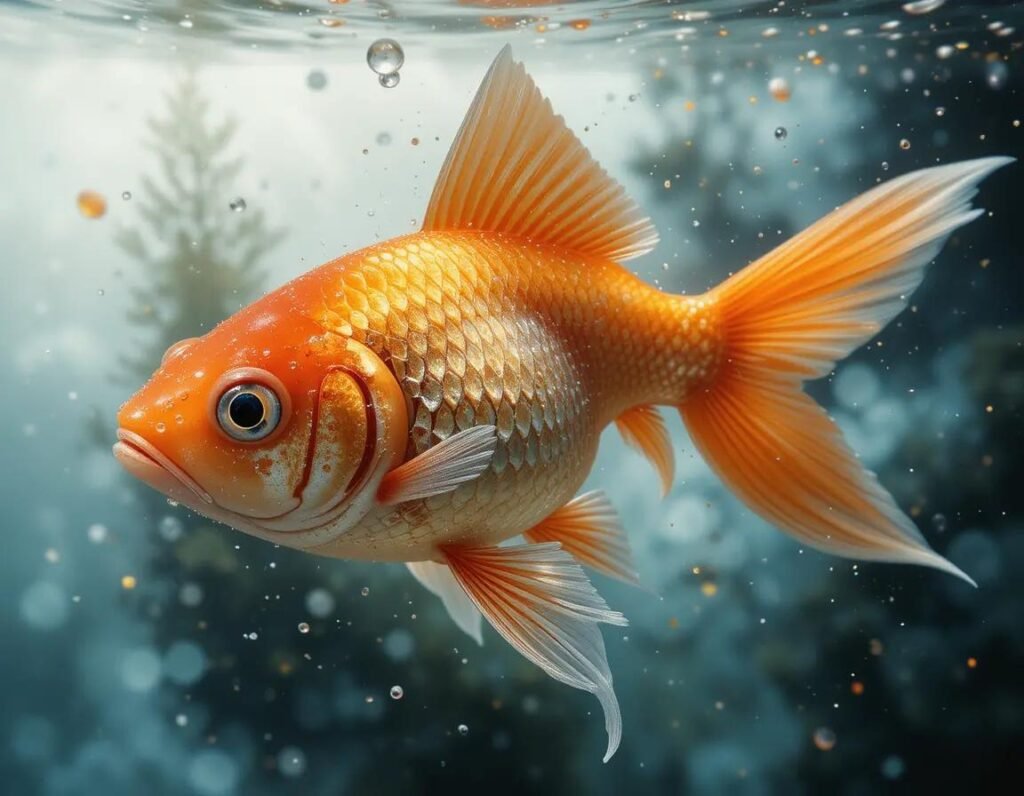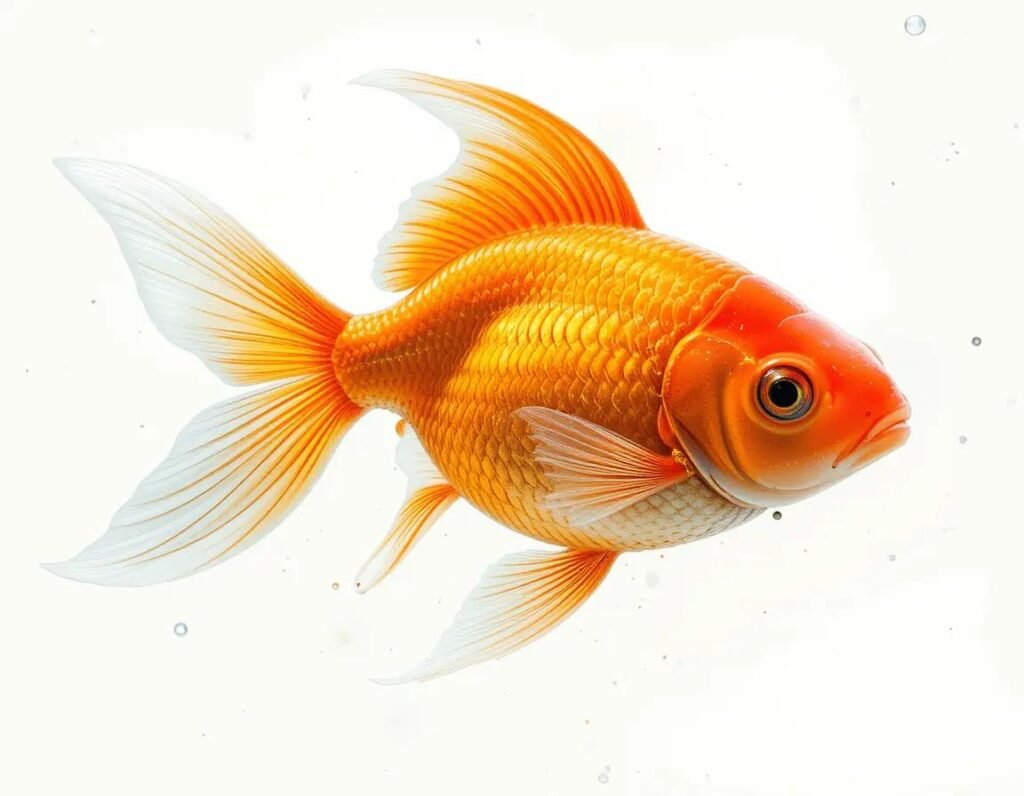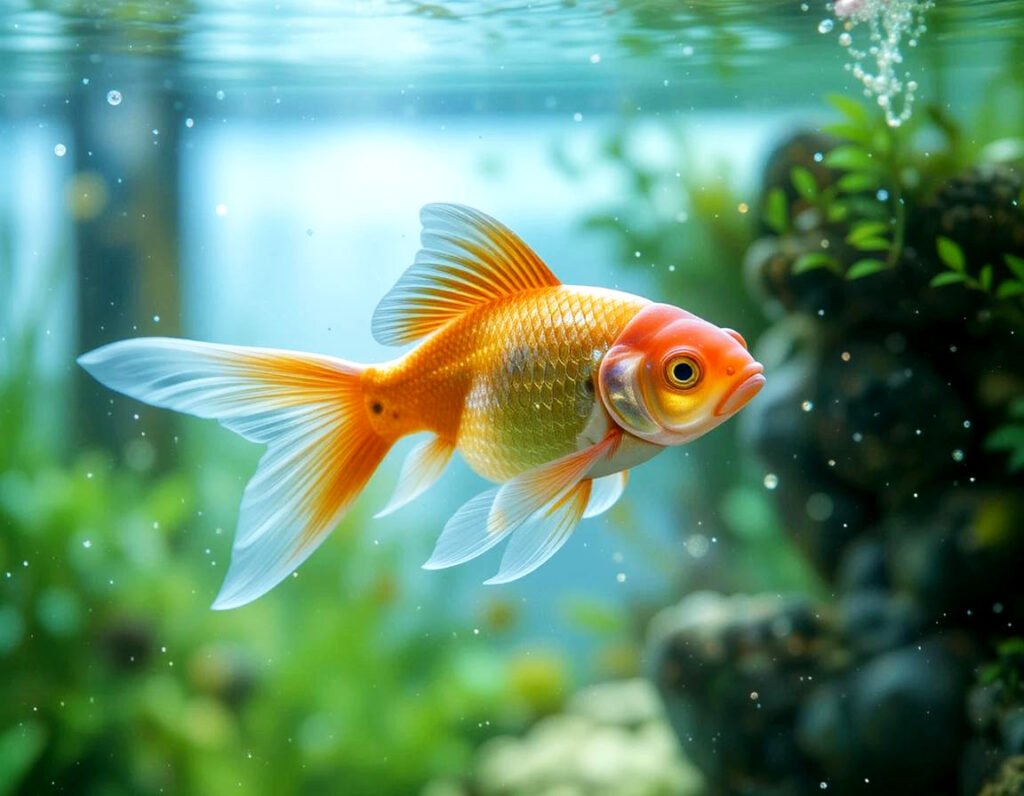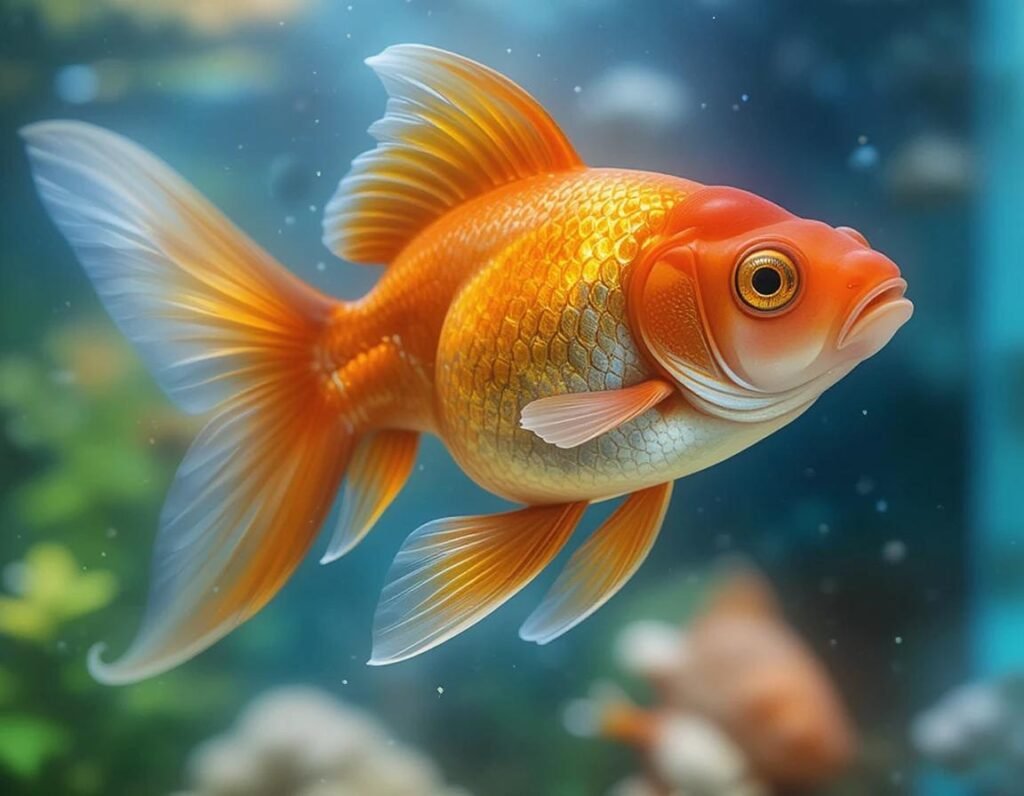
If you’ve ever stared at your goldfish and wondered, “Is it a boy or a girl?”—you’re not alone! Telling the gender of a goldfish can be trickier than deciding what to name it. Goldfish don’t exactly wear gender tags like some other animals, so figuring out whether your fish is male or female requires a bit of detective work. But don’t worry, you won’t need a magnifying glass or a Ph.D. in fish biology. We’ll break it down for you in the simplest way possible, with a dash of humor, of course!
The Basics: Male vs. Female Goldfish
Before we dive into the details, let’s make it clear—there’s no “goldfish gender reveal” like we see for humans (sadly, no balloons or confetti for your little finned friend). However, with a bit of observation and timing, you can usually tell if your goldfish is a he or a she. Here’s the scoop:
- Male Goldfish: Males tend to be smaller and slimmer, with more noticeable breeding tubercles (little white bumps on their gills and pectoral fins). They’re the ones who like to chase females around during breeding season—kind of like the fish version of a romantic pursuit!
- Female Goldfish: Females, on the other hand, are usually a little larger and more round (especially when they’re ready to lay eggs). Think of them as the “bigger, curvier” goldfish in the tank. They’re more egg-laden and, in some cases, even have a more rounded belly when they’re about to breed.
How to Tell the Gender of Your Goldfish: A Few Tips and Tricks
Now that we’ve got the basics, here are some handy tips to help you figure out if your goldfish is sporting a tuxedo or a gown.
1. Breeding Tubercle Check
Breeding tubercles are the telltale sign of a male goldfish. During breeding season (typically in the spring), males develop white bumps on their gill covers and pectoral fins. These are the goldfish equivalent of a gentleman putting on his best bowtie. If you see these little white spots, you’re probably looking at a male!
2. The Belly Test
When female goldfish are ready to lay eggs, their bellies can become noticeably rounder. It’s like they’re carrying a batch of goldfish eggs in there! If your goldfish looks like it’s been indulging in too many snacks and has a plump, swollen belly, there’s a good chance she’s a female.
3. Size Matters
In the world of goldfish, size can sometimes indicate gender. Male goldfish are often slimmer and smaller than females. This is because females need more room for those egg-filled bellies! If your goldfish has a sleek, streamlined body, it’s probably a male. If it’s a bit on the rounder side, you might be dealing with a female.
4. Behavioral Clues
During breeding season, male goldfish can become a bit… pushy. They often chase the female around the tank and nudge her, trying to encourage her to release her eggs. Think of it as a goldfish version of a romantic pursuit. Females, however, usually take the chase in stride and might swim more calmly. If your goldfish is engaging in this kind of “courtship” behavior, it’s likely a male.
5. Gills and Pectoral Fins
Males sometimes have slightly more vibrant colors around their gills and pectoral fins compared to females. These colors are often more pronounced duraing the breeding season, when males are trying to impress the ladies. So, if your goldfish is looking a little more dapper than usual, it could be a male!
Can You Tell the Gender of a Baby Goldfish?
Good question! When they’re babies (or fry), it’s practically impossible to tell whether your goldfish is a male or a female. They all look pretty much the same. It’s only once they reach adulthood (usually around 1-2 years old) that their gender becomes easier to distinguish.
Are There Any Goldfish Species with Obvious Gender Differences?
Yes, some goldfish varieties might make gender identification a bit easier. For example, male Ranchu goldfish can sometimes have a slightly more prominent head (called a “hood”) during breeding season, while females may have a more rounded body. However, no goldfish species has obvious and permanent gender characteristics like we might see in other animals, so you’ll still need to rely on your observation skills!
Final Thoughts: Who Needs Gender Reveals Anyway?
At the end of the day, whether you have a male or female goldfish, they’re both fabulous! While it’s fun to know your goldfish’s gender, it’s more important to make sure they’re healthy and happy in their tank. Just like humans, male and female goldfish both need proper care, a good diet, and a clean home to thrive.
So, don’t stress too much about “who’s who” in your tank. Whether it’s a boy or a girl, your goldfish will appreciate the love and attention you give them—no matter their gender!
More Fun Facts About Goldfish Gender
You thought we were done? Not quite! Here are a few quirky tidbits about goldfish and their gender that might leave you with a chuckle:
- Male Goldfish Can Be Drama Queens Too
We all know a guy who can be a little extra when it comes to impressing the ladies. Well, male goldfish are no exception! When they’re in breeding mode, they’ll chase the females all over the tank, sometimes nipping at their fins to get their attention. It’s like a goldfish version of a dramatic rom-com—minus the cheesy pickup lines! - Female Goldfish Might Be the Tank’s “Queen”
Let’s face it: females can be the stars of the show. They’re often larger and more majestic, especially when they’re ready to breed. They glide through the tank with that “I’m carrying the future of goldfish-kind” vibe, while the males scurry around them in a frantic attempt to impress. - Goldfish Can Be Like a High School Drama
Just like in high school, male goldfish sometimes have a little rivalry going on when it comes to the ladies. If you have more than one male goldfish in your tank, you might witness some “competition”—male goldfish sometimes try to out-chase each other during breeding season. It’s like the goldfish equivalent of “who can get the most attention?”
How Gender Affects Goldfish Care
While figuring out the gender of your goldfish can be a fun little puzzle, it’s also important to remember that gender doesn’t affect the care of your fish too drastically. However, there are a few things to consider:
- Breeding Time: If you have both male and female goldfish, breeding season can lead to some chaotic (and sometimes stressful) behavior. Male goldfish might chase females relentlessly, and females might get a bit worn out from the attention. Be prepared to offer them plenty of space and hiding spots if things get too intense.
- Tank Size: Larger females, especially those carrying eggs, might need more space to swim comfortably. If you have a small tank, consider upgrading to accommodate their larger size and ensure they have room to move around.
- Diet Needs: During breeding season, male goldfish may need a little more protein in their diet to fuel their extra “romantic” energy. Females, when full of eggs, might benefit from extra greens in their meals. Keep their diet balanced to keep both genders in tip-top shape!
In conclusion, whether you have a “He” or a “She” swimming around in your tank, goldfish are charming little creatures that will win your heart regardless of their gender. So, get your detective hat on, and have fun figuring out if your goldfish is a male or female, while ensuring they have a happy and healthy life in your care!

FAQs About How to Tell Goldfish Gender
1. How can I tell if my goldfish is male or female?
Answer: The easiest way to tell the gender of a goldfish is by looking at their body shape, size, and behavior. Male goldfish are generally smaller, slimmer, and more active, especially during breeding season. They also develop white bumps called breeding tubercles on their gills and pectoral fins. Female goldfish are typically larger and rounder, especially when they’re ready to lay eggs. If your goldfish has a noticeable round belly, you’re likely looking at a female.
2. Do goldfish genders change over time?
Answer: Goldfish don’t change genders like some other species (think clownfish). However, as they grow older, males may develop more noticeable breeding tubercles during the breeding season. Females can become visibly rounder when they are carrying eggs, but this is a temporary change, not a gender swap!
3. Can I tell the gender of baby goldfish?
Answer: Sadly, it’s very difficult to tell the gender of goldfish when they’re babies (or fry). They all look pretty much the same, and gender traits don’t become evident until they reach adulthood—typically 1-2 years of age.
4. Do male goldfish always chase females?
Answer: Yes, it’s pretty common during the breeding season. Male goldfish get excited and will chase females around the tank to encourage them to release eggs. It’s their version of a romantic pursuit (minus the love songs). If you see a lot of chasing, you probably have a male goldfish trying to win the attention of a female.
5. Can goldfish of different genders live together?
Answer: Absolutely! Goldfish can live together peacefully regardless of gender. However, if you have both males and females, the males might get a little more aggressive during the breeding season. Providing enough space and hiding spots for the females can help reduce stress.
6. Are there any goldfish breeds where gender is easier to identify?
Answer: Some goldfish breeds, like the Ranchu, might show more obvious physical differences between males and females, especially during breeding season. Males can have a more pronounced head (called a “hood”), while females might have a rounder, fuller body when carrying eggs.
7. Can goldfish change their behavior based on gender?
Answer: Yes, gender can affect behavior, especially during breeding time. Males are typically more active and chase females around the tank, while females are usually more reserved and focus on swimming calmly. Non-breeding goldfish, however, tend to have similar behavior regardless of their gender.
8. Do I need to separate male and female goldfish?
Answer: You don’t need to separate them unless you’re dealing with a breeding situation. If you’re not interested in baby goldfish, you might want to control the environment to reduce stress on the females. But as long as your goldfish are getting along and have enough space, they should be fine together!
9. Is gender important for goldfish care?
Answer: Gender doesn’t affect the basic care needs of goldfish. Both males and females require good water quality, a proper diet, and enough space. However, during breeding season, males may become more aggressive and females may need extra care due to their rounder bellies when full of eggs.
10. Can goldfish have gender-specific health issues?
Answer: Generally, goldfish of either gender can suffer from similar health issues, such as fin rot, swim bladder problems, or parasites. However, during breeding time, females may experience stress from the constant attention from males, and males can sometimes overexert themselves chasing the females. Make sure to keep an eye on their health and behavior during breeding season to avoid any complications.
Whether you’re keeping a single goldfish or a whole school, knowing the gender can add another layer of fun to your fish-keeping hobby. But remember, whether it’s a “he” or a “she,” your goldfish will love you just the same!



woh I enjoy your blog posts, saved to fav! .